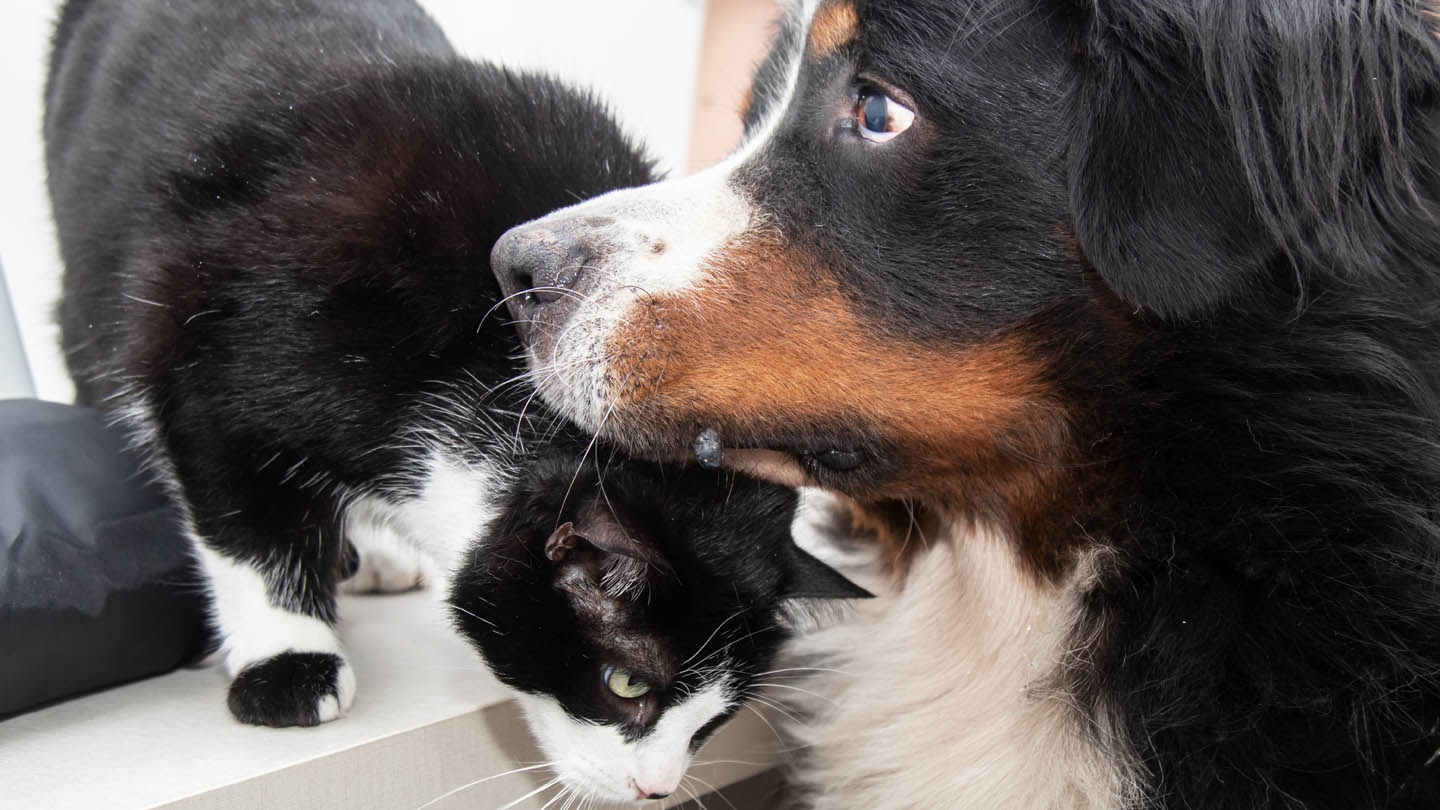A brighter future for pets with cancer
Cancer is something we wish no one had to face, including our four-legged companions. Fortunately, over the years, there have been learnings in humans and animals that have improved the available treatment options and benefits that come with it. New possibilities are being explored, and veterinarians offer more therapies their clients are willing to pursue.

Pet cancer - past and present
Over the years, as our pets' prevention, health care, and diets have improved, they have led longer lives. As a result, we now see our companions dealing increasingly with diseases more common in older animals (and humans), including cancer. Cancer is, in fact, the leading cause of death in dogs over one year old, accounting for almost one-third of all deaths. Because of this, the efforts to find easier and more effective ways of treating cancer have become a major focus. We now know the importance of early detection, diagnosis, and treatment of cancer and the positive impact this could have on the overall outcome.
Most common cancer in pets
The more common types of cancer that cause death in dogs include lymphoma, bone cancer, skin cancer, splenic or liver tumor, and bladder cancer, among others. The most common tumors in cats include lymphoma, oral tumor, mammary tumors, and other types.
On the lookout for cancer symptoms in pets

It is important to consult with your veterinarian promptly if you notice that your pet has: abdominal swelling, is bleeding from the mouth and nose, is breathing abnormally, has a hard time eating, shows any lumps, bumps, or discolored skin, has a wound that is not healing properly, diarrhea or vomiting. But also, a vet should check out more subtle signs like a sudden change in weight, pain, or lameness. Don’t ignore any sign: acting fast can make a difference.
Cancer treatment in pets

Once you have talked to your veterinarian about your pet’s symptoms, a physical examination, routine laboratory tests, x-rays, and ultrasound may be in order. The vet may also do a biopsy to make the diagnosis. Depending on the diagnosis, the veterinarian will then create an appropriate treatment plan. If necessary, an oncologist – a cancer specialist – will be consulted to apply the proper treatment.
It is estimated that less than ten percent of veterinary cancer patients are treated by an oncologist. This may be due to the fact that, in some situations, veterinarians and pet owners don’t feel that the benefits of the treatment outweigh the perceived costs, including concerns about the potential side effects of the treatments.
Dr. Sylvester Price, Head of Non-Infectious Disease Research in Animal Health, shares insight from his time as a practicing oncologist: “Once an oncologist explains that the risk of severe vomiting and malaise associated with chemotherapy is usually less than ten percent, many owners choose to proceed if they feel that the time gained compared to no treatment is beneficial to their pet.”
Decision factors in cancer in pets

It is usually the benefits, not the costs, that influence the owner’s decision on the treatment, although most owners don’t have insurance for cancer treatment for their dogs and cats – meaning they must cover the costs themselves.
Depending on the type and stage of tumor, therapy may be able to extend the life of a dog or cat by as much as one to two years, or even longer. However, the objective of some treatments is to improve the quality of the pet’s life.
Accessibility is also important: Driving for hours to get to the nearest specialist may not be possible for some. As the number of families with pets increases, the number of pets with cancer increases, often more quickly than the number of veterinary oncologists available to meet the demand.
“What a difference it would make if veterinarians could have more treatment options available in general practice, rather than having to refer pets to a specialist. This way, pet owners would have ready access to therapy, helping their pets live longer with a good quality of life,” says Dr. Marlene Hauck, Head of Exploratory Research in Oncology in Animal Health.
Different kinds of cancer therapies
The most common form of cancer therapy is surgery. Other options include chemotherapy, radiation, freezing (cryosurgery), heating (hyperthermia), or immunotherapy, depending on the type of cancer being treated. In some cases, methods are combined for a successful outcome. At times, however, the cancer is so advanced that available treatments won’t make a difference, and euthanasia may be the best option.
What the future entails
For decades, cancer treatment in pets has relied on adapting chemotherapy originally approved for use in people. Nowadays, newer anticancer drugs have a different effect than older therapies.

Moreover, we are working with external partners and colleagues from human pharma to leverage their knowledge with veterinary oncology learnings for potential application in animal health. Our colleagues from human pharma have welcomed and supported this collaboration pioneering together on this approach.

"Our recent partnership with CarthroniX is another example of how our partnerships open new doors for research possibilities. We are excited to start working with them and see what the future might bring.”
Related Press Releases


